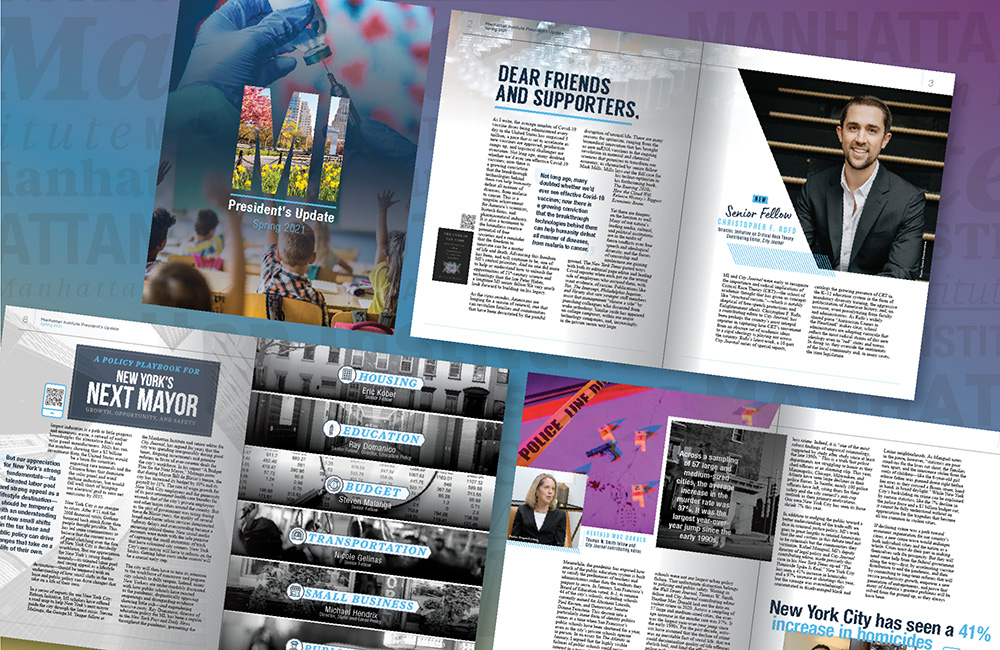‘Hamilton’ is Saving NYC’s Education System
‘Hamilton” is on a roll.
Amazingly, the cast recording from a Broadway musical about the nation’s first treasury secretary is near the top of the rap/hip-hop charts. Billboard gave its soundtrack its first-ever five-star review.
“The decline of civic education and students’ knowledge of US history is alarming. One recent survey found that only 43 percent of the nation’s 17-year-olds were able to place the Civil War within the correct 50-year time period.”
Its creator, Lin-Manuel Miranda, won a MacArthur genius award. Miranda’s masterpiece will surely win an armful of Tonys and Grammys — but there is one more award he should be considered for: Teacher of the Year.
Last week, the producers of “Hamilton” announced a partnership with The Rockefeller Foundation through which 20,000 underprivileged New York City high-school students will be given tickets for $10 (one Hamilton).
Students will be required to complete a research project on a historical figure, event or document and then turn their research into an “artistic expression,” such as a song or poem, which they’ll then share with the cast of “Hamilton” before special student-only matinees.
The Gilder Lehrman Institute of American History, a nonprofit devoted to improving history education, is overseeing the project. It’s also creating an online Hamilton curriculum that encompasses the man and the musical.
The news couldn’t come at a better time. The decline of civic education and students’ knowledge of US history is alarming. One recent survey found that only 43 percent of the nation’s 17-year-olds were able to place the Civil War within the correct 50-year time period.
Miranda is a former seventh-grade English teacher, and with “Hamilton” he’s still teaching — only his classroom, the Richard Rodgers Theatre, has 1,392 seats.
“Hamilton” tells the story of the nation’s founding in a historically accurate and compelling manner. It’s all there: the Enlightenment ideals, the major battles of the Revolution, our original sin of slavery, the Constitutional Convention, the Federalist Papers, Hamilton’s financial system, the French Revolution.
I saw the show with a history teacher who nearly fainted when Washington began to sing his Farewell Address.
Not only history teachers should be rushing to expose their students to “Hamilton.” English teachers, take note: The dense lyrics are filled with rich vocabulary. The wordplay contains references from Shakespeare, Greek mythology and the Bible.
The modern way Hamilton’s story is told — Miranda weaves rap, hip-hop, pop music and traditional Broadway together in one beautiful tapestry — along with the fact that the astonishingly talented cast is comprised of mostly black and Latino actors, has led to underprivileged, minority students coming away from the show with a changed view of America and themselves.
““Hamilton” teaches young people (and old) about love, loss, legacy. In a word: life. At this moment, when our politics are so polarized and pessimistic, “Hamilton” appeals to the better angels of our nature.”
I spoke with a group of students at Democracy Prep Charter High School in Harlem who were fortunate to see the show during its run at The Public Theater. To say the show was mind-opening for them would be an understatement. “Hamilton” was a “profoundly transformative experience for our kids,” School Principal Natasha Trivers told me. It clearly was.
One African-American girl told me, “ ‘Hamilton’ made me realize that this is our country, too.”
In addition to instilling a sense of civic ownership, the show clearly spoke to them on a personal level. Several students saw themselves in the story of the orphaned, immigrant striver. “It’s as if they were talking about my life on stage,” one boy remarked.
Miranda and the rest of the cast have been generous in visiting schools and speaking to students. One organization they’ve grown particularly close to is Graham Windham, the family and youth development organization founded by Hamilton’s widow, Eliza. The actress who plays Eliza Hamilton, Phillipa Soo, has spent a great deal of time at Graham Windham.
Perhaps most important, “Hamilton” teaches young people (and old) about love, loss, legacy. In a word: life. At this moment, when our politics are so polarized and pessimistic, “Hamilton” appeals to the better angels of our nature.
“I wrote some notes at the beginning,” Hamilton sings near the end of the musical, for “America, you great unfinished symphony.”
If educators and philanthropists work together to make sure every high-school student in America is exposed to the brilliance and beauty of “Hamilton,” that symphony will be ever more harmonious and resonant.
This piece originally appeared in New York Post

